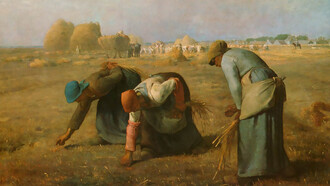The Spring Festival, commonly referred to as the Chinese New Year, is a period of exuberant celebration steeped in custom and meaning. According to the Chinese zodiac, every year has a distinct personality. The magnificent Year of the Dragon will begin in 2024. A unique fusion of traditional beliefs and contemporary traditions that bring families, communities, and cultures from all over the world together is revealed as we dig further into the intricate web of customs and rituals surrounding this important occasion.
This fortunate occasion takes place following the Gregorian calendar's change of seasons, usually in the latter part of January or early February. The Chinese New Year, which begins on January 1st of each year, is based on the lunar calendar as opposed to the Western New Year, which has a set date. According to Chinese zodiac tradition, each of the twelve animals represents a certain quality or attribute of the individual.
The year of the dragon: a majestic symbol
The dragon is highly revered in Chinese culture. The Chinese dragon is a sign of strength, power, and good fortune, in contrast to the Western perception of dragons as terrifying beasts. One of the most respected animal signs in the Chinese zodiac, the year of the dragon, is thought to bestow these fortunate characteristics on those who are born under it.
Because it signals a period of change and rebirth, the year of the dragon is very important. This year offers plenty of options and the possibility of good transformation, much like the legendary dragon gives rain to nurture fields. With wide arms, people welcome the year of the dragon, eager to harness its vitality and embrace fresh starts.
The zodiac's twelve animal signs are fundamental to Chinese New Year celebrations. One of these animals—the rat, ox, tiger, rabbit, dragon, snake, horse, goat, monkey, rooster, dog, or pig—is linked to a certain year. People think that an animal's birth year has an impact on their personality, luck, and interpersonal compatibility.
Chinese New Year celebrations take place in a unique way, although the Western New Year is frequently celebrated with parties, fireworks, and countdowns. Families start cleaning their homes, buying new clothes, and preparing a feast for this large occasion weeks in advance. Rather than large-scale public gatherings, the emphasis is on family reunions and traditional practices.
The idea of the zodiac's twelve animal signs is fundamental to Chinese New Year celebrations. The animal chosen for each year is not chosen at random; rather, it follows a cyclical pattern with profound roots in Chinese mythology. According to legend, animals competed to establish their zodiac order in a race against the Jade Emperor, the ruler of heaven. It is stated that the animals of the zodiac were arranged in the order they crossed the finish line, which established the race's sequence. One of these animals—the rat, ox, tiger, rabbit, dragon, snake, horse, goat, monkey, rooster, dog, or pig—is linked to a certain year. People think that an animal's birth year has an impact on their personality, luck, and interpersonal compatibility.
Welcoming symbolism and tradition
Chinese New Year is a time for rebirth, introspection, and harmony. It's also a chance to embrace the future and respect tradition. Let us celebrate the strength, prosperity, and good fortune that the dragon symbolizes as we welcome the Year of the Dragon. May everyone who celebrates this auspicious occasion experience happiness, prosperity, and harmony; may the dragon's spirit motivate us to achieve greater things in the coming year.
Families get together again as the Chinese New Year comes to an end to celebrate, look back on the previous year, and make plans for the upcoming one. People are saying goodbye to the old and welcoming the new with hope and enthusiasm, creating a feeling of regeneration and optimism in the air. Communities gather in the spirit of harmony and unity to bless one another, exchange greetings, and build links that cut across cultural divides.
The reunion meal held on the eve of the Lunar New Year is a major component of the Chinese New Year festivities. Around tables filled with symbolic delicacies, each with a unique meaning, families congregate. Every dish offered has a desire for the next year, from fish for plenty to dumplings for prosperity.
The streets come alive with vibrant decorations and exuberant celebrations as the New Year draws near. Lantern celebrations provide a glow in the night sky as elaborate lanterns in a range of sizes and forms adorn public areas. The elaborate patterns and vivid colors stand for prosperity, pleasure, and hope.
The dragon dance is among the most intriguing Chinese New Year's events. Performers handle long, serpentine dragons while drums and cymbals clash, creating a dazzling display of synchronization and talent as they weave and dance through the streets. The community is said to be blessed and to be protected from evil spirits by the dragon dance.
Another essential component of the Chinese New Year celebrations are fireworks. It is believed that the loud explosions and dazzling light show ward off evil spirits and herald in a joyous and festive New Year. However, limitations on fireworks have been in place in certain areas recently due to worries about air pollution and safety. This has caused a change in celebration toward other forms of entertainment, like light and laser displays.
Traditional dance, music, and martial arts performances add even more flavor to the celebrations and highlight the richness and diversity of Chinese ancestry. These performances, which range from elegant fan dances to thrilling lion dances, provide an insight into the complex fabric of Chinese culture and history.















